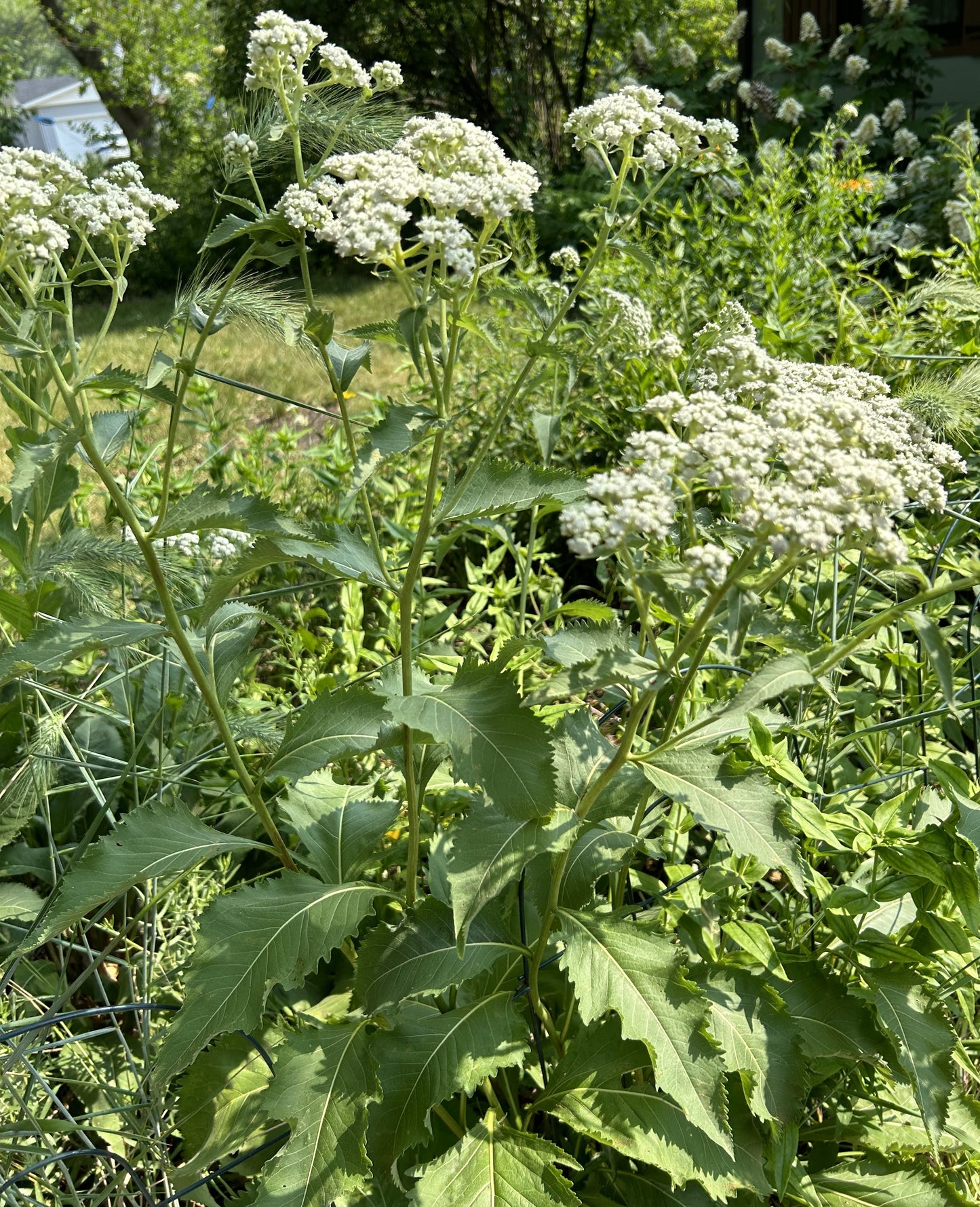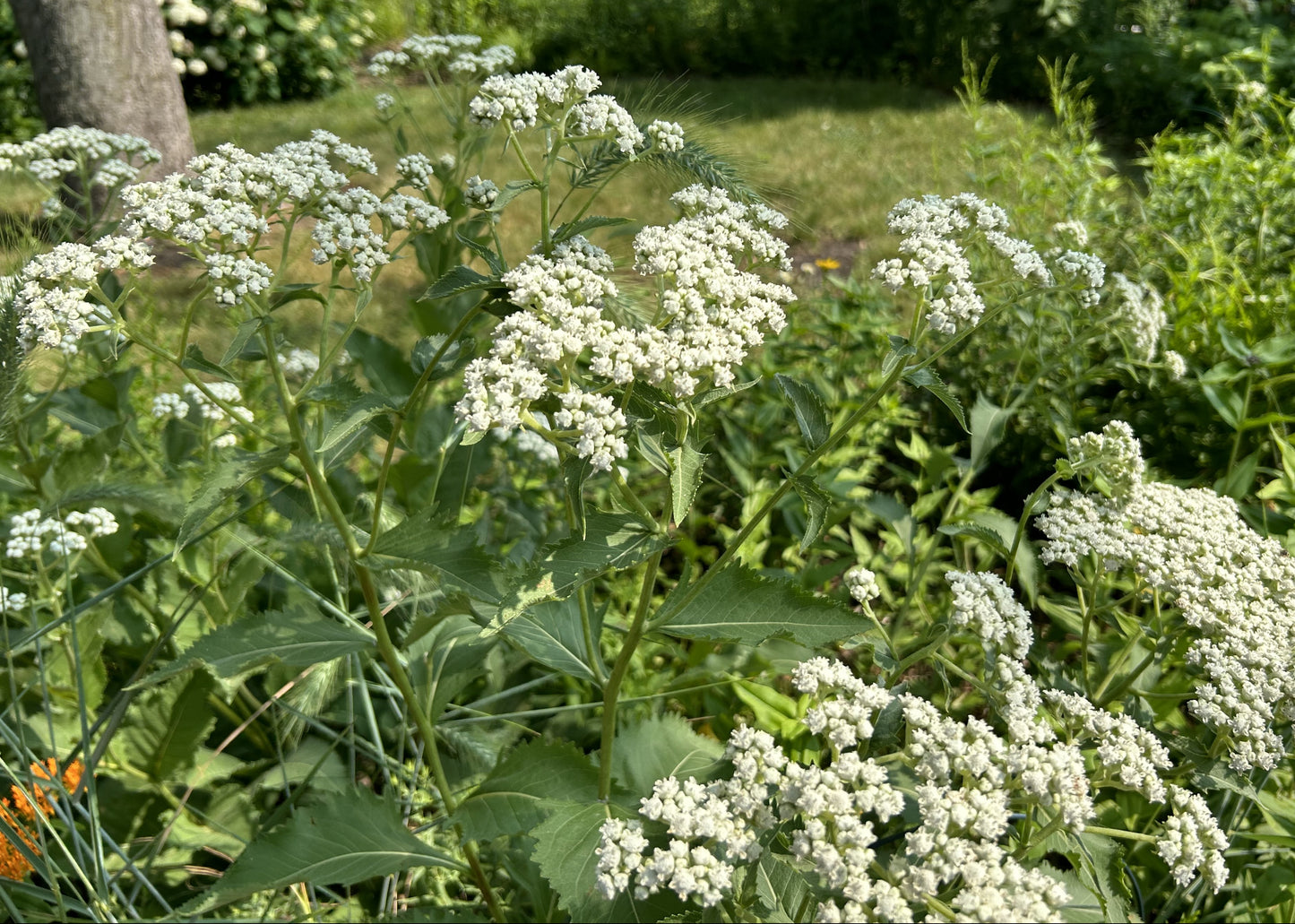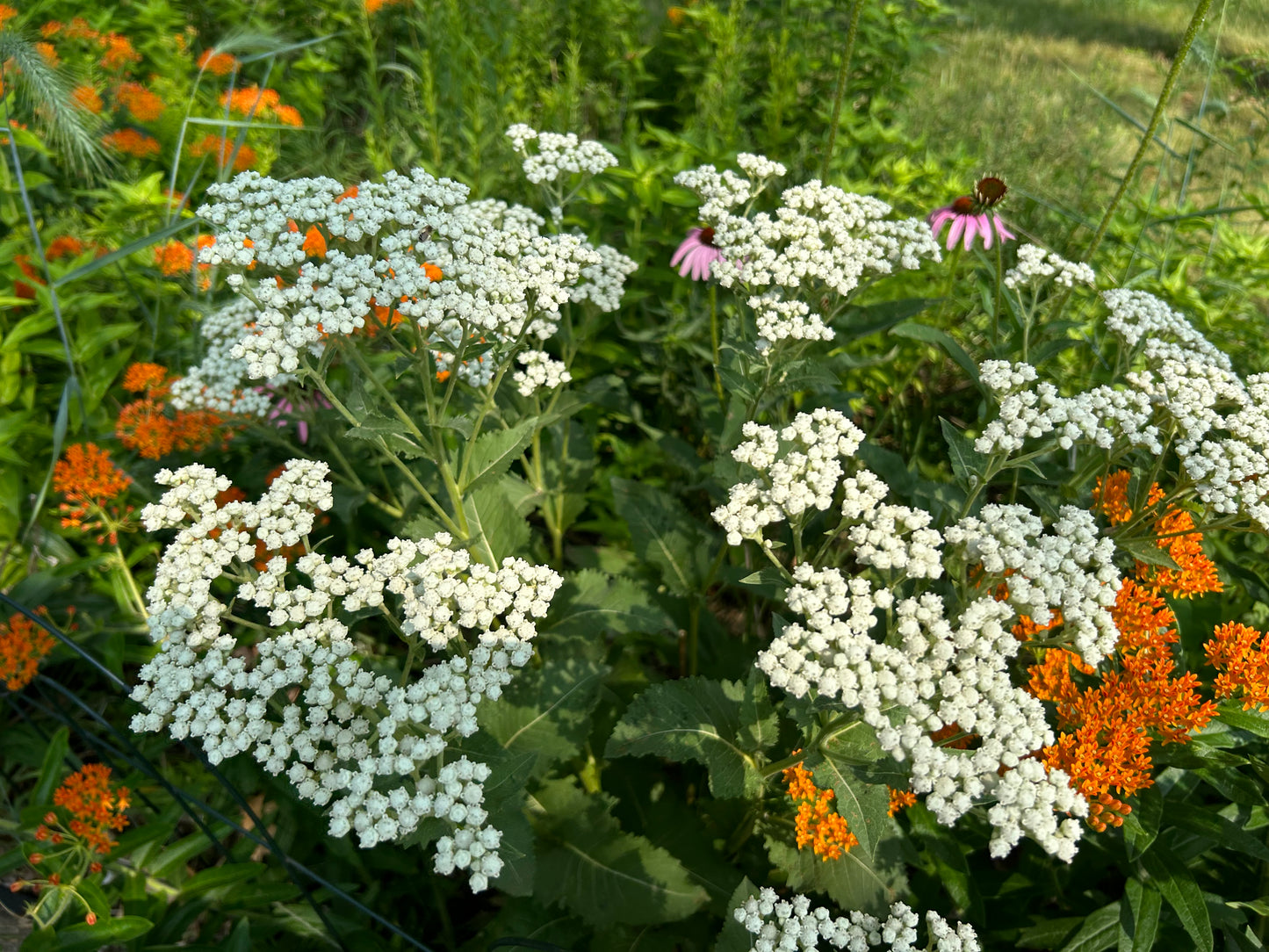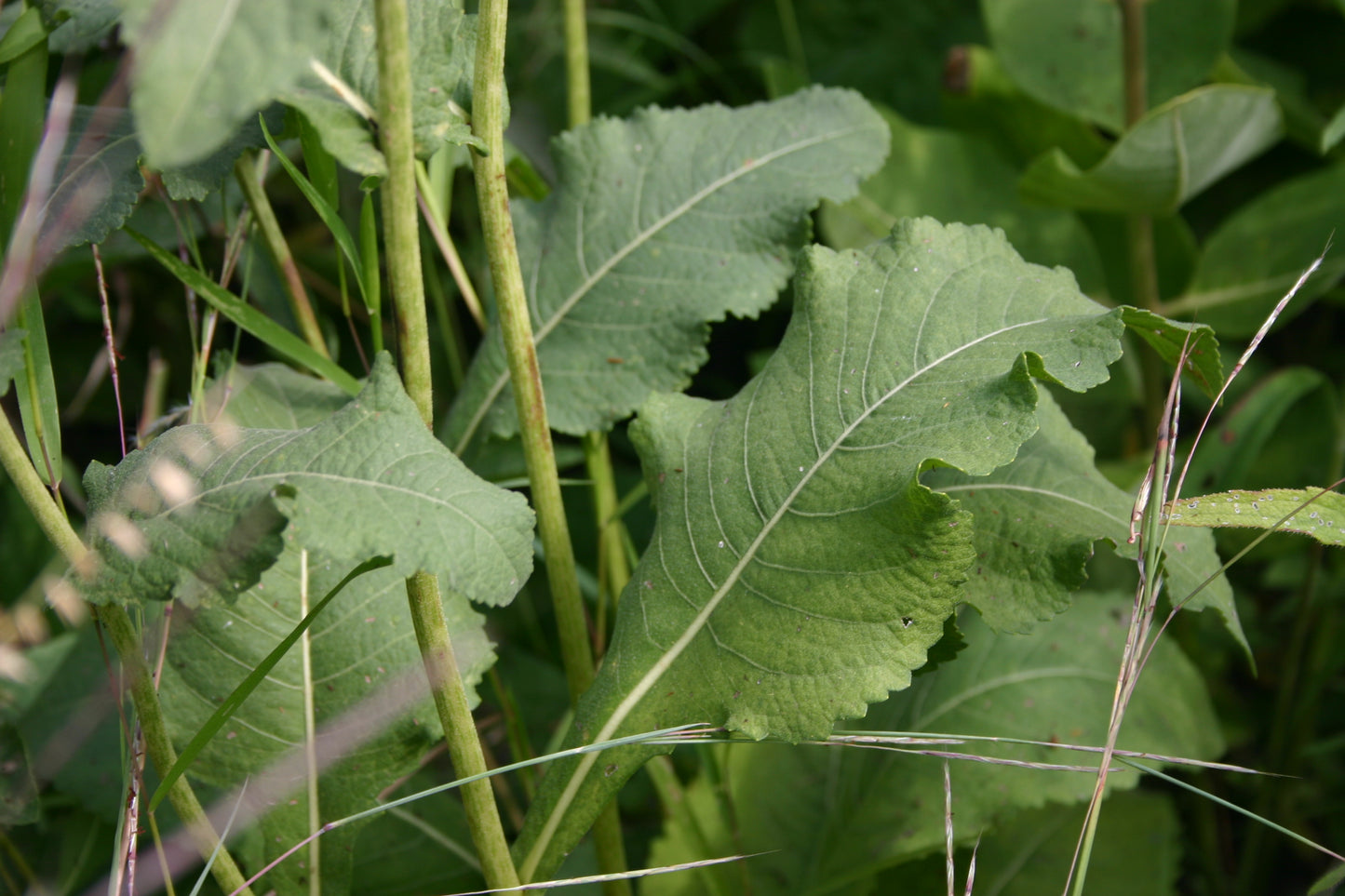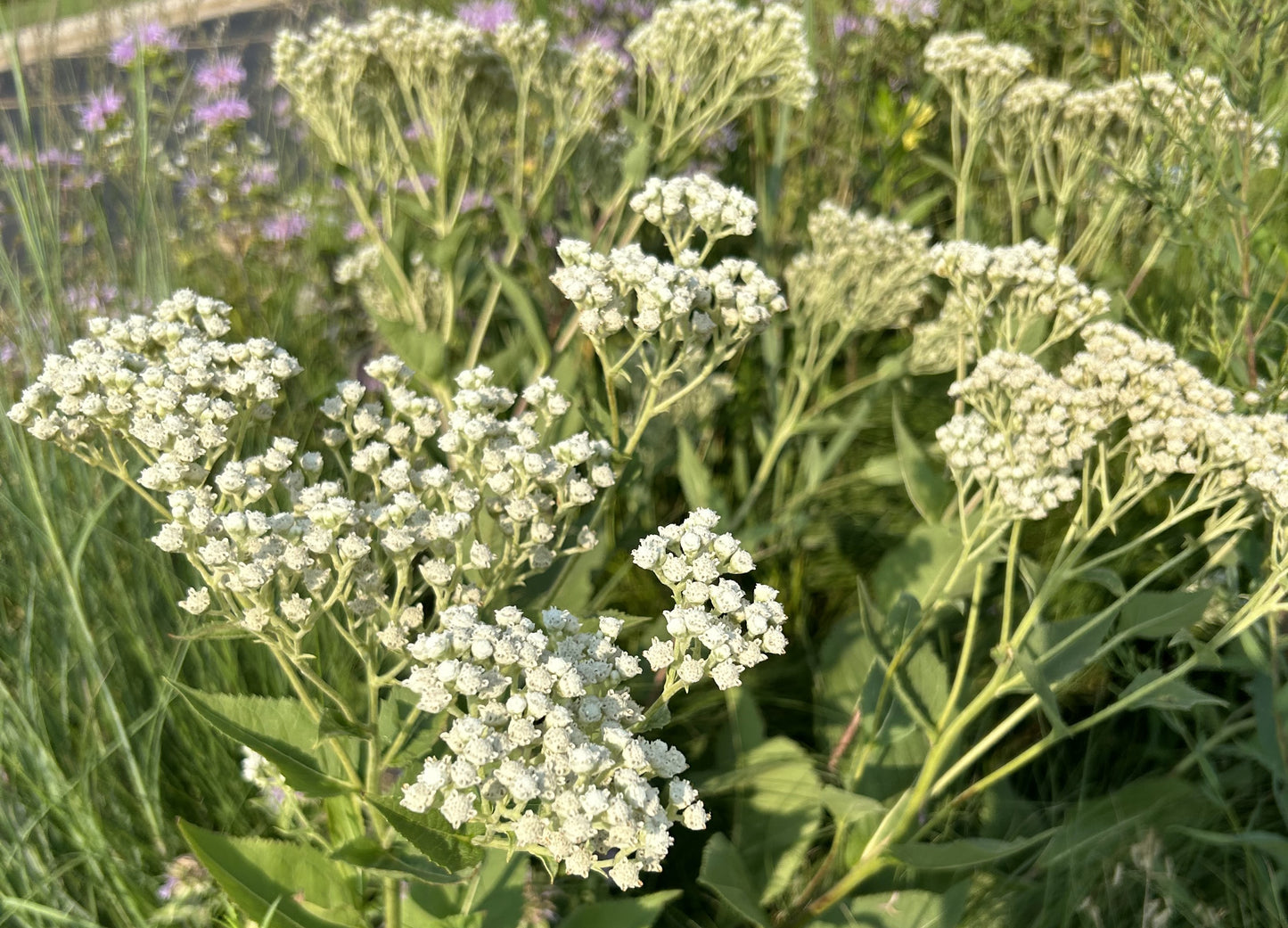stellarnatives
Parthenium integrifolium 'Wild Quinine'
Parthenium integrifolium 'Wild Quinine'
Couldn't load pickup availability
Parthenium integrifolium, also known as wild quinine is a North American native plant belonging to the Aster of Daisy family (Asteraceae). It is a perennial herb that grows up to 3 feet tall, with opposite leaves that are lance-shaped and 2-6 inches long. The flowers of Parthenium integrifolium are small and white, typically less than 1 inch in diameter. They are arranged in loose clusters, known as panicles, that are 2-6 inches long and can be either terminal or axillary. The flowers have both ray and disk florets, with the disk florets being slightly more numerous and prominent. The disk florets have five petals and are fertile, producing the seeds that will produce new plants. The ray florets have only one petal and are sterile, serving only to attract pollinators to the plant. The plant blooms from late spring to early fall and is an important source of nectar for many insects, including bees and butterflies.
Parthenium integrifolium is found in a variety of habitats, including prairies, savannas, and along roadsides. It is also a popular ornamental plant, used in gardens and landscaping.
Parthenium integrifolium is a relatively adaptable plant that can grow in a variety of soil and light conditions. However, it prefers well-drained soils that are rich in organic matter and a moderate amount of moisture. The plant is able to tolerate a range of soil pH levels, from acidic to alkaline. It may not perform well in areas with consistently damp or waterlogged soil, as this can lead to root rot. It is also important to avoid planting this species in areas that are heavily disturbed, as it may not be able to establish itself in areas with heavy competition from other plants.
In terms of sunlight, Parthenium integrifolium prefers full sun to partial shade. It will grow well in areas with 6 or more hours of direct sunlight per day, but can also tolerate some shade. The plant is able to adapt to changes in light levels, making it a good choice for areas with fluctuating light conditions.
Medicinal properties: In addition to its use as a treatment for fevers, Parthenium integrifolium has a number of other medicinal properties. The plant is a mild sedative and has been used to treat headaches, stomach aches, and other ailments. The roots and leaves of the plant contain compounds that have anti-inflammatory and analgesic properties. Native American tribes used the plant to treat fevers and other ailments, and it was later adopted by European settlers for the same purposes.
Materials
Materials
Shipping & Returns
Shipping & Returns
Dimensions
Dimensions
Care Instructions
Care Instructions
